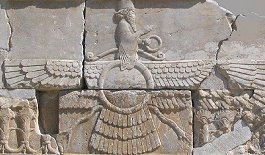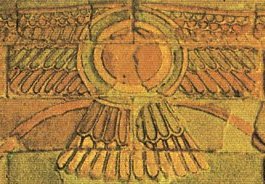Page 3 of 5
The End of Eden
The Celestial Disk
Just as mysteriously as the abrupt epidemic of global aggression during the early fifteenth century BC, and at the same time, civilizations around the world suddenly adopted new gods. For example, in Turkey the Hittite civilization adopted a new god called Kumarbis; in Assyria, what is now northern Iraq, a god called Antum is first recorded; and in Syria the Mitannians suddenly embraced a new supreme deity called Ir. Even across the ocean in Central America, later Mayan mythology speaks of a new god that brought warfare to earth at that time. In Iran another new religion was founded. This was what became know as Zoroastrianism, and its oldest works, the Gathas, composed at exactly this time, taught the existence of a single, supreme deity called Ahura Mazda – "The Wise Lord". At precisely the same time a sect emerged in Egypt that revered a god called the Aten - "The Disk". This new religion grew over the following century and in the mid 1300s BC became for a while the national religion of Egypt, proclaiming the Aten as the only god. Some of the earliest Chinese texts, found during excavations of the ancient city of Luoyang in eastern China, also make reference to a contemporary new sect. Dating from around 1480 BC, they refer to a cult that revered a single deity named Lao-Tien-Yeh - "The Great God".
Civilizations throughout the world known to have adopted a new god in the early fifteenth century BC.
Unlike the usual ancient practice of depicting gods in the form of humans, animals or mythical creatures, the new gods that were suddenly venerated around the world in the early fifteenth century BC were each represented in temples, monuments, and tombs by a carved or painted symbol. This simultaneous departure from tradition is strange enough, but even more curious is that the symbol each separate culture independently chose to employ was an astonishingly similar celestial disk or star.
Until now, historians and archaeologists have tended to attribute much of this to coincidence, or at most to an unexplained phenomenon of parallel social development. Could there, however, have been a common link? Something that might also have been responsible for the simultaneous epidemic of global violence? Vital evidence to suggest just such a possibility still survives. Remarkably - and surely way beyond coincidence - many of these widely separated cultures depicted their new gods in an almost identical fashion.
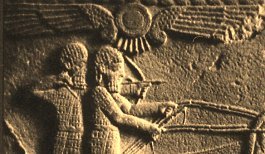
In Turkey the Hittite god Kumarbis was represented by a circle with wings to each side and a fan-shaped array of lines beneath. In Assyria the god Antum was represented by a winged star with a similar fan-shaped tail. In Syria the Mitannian god Ir was represented as a winged disk containing a star with an elongated tail. In Iran the deity Ahura Mazda was represented by the figure of a man above a winged disk with a fan-shaped tail. In Babylonia the Kassite god Suriash was represented by yet another winged and tailed disk. Two civilizations represented their new gods as tailed disks but without wings: in Egypt the new god the Aten was represented as a disk with a series of straight lines fanning out beneath it, and in far-away China the god Lao-Tien-Yeh was represented by a very similar disk with a fan-shaped array of lines radiating from it. That these civilizations, separated from one another across thousands of miles stretching from Cairo to Shanghai, independently chose these similar glyphs to represent their new gods is surely beyond coincidence. What, though, could have similarly inspired people so widely dispersed across half the globe? The answer, it seems, has something to do with the skies.
The fact that these symbols often incorporate wings suggests that they were in some way associated with the sky, as does the fact that the symbol is frequently depicted in battle scenes or images of religious life as hanging in the air above the setting. In some instances the god's name actually alludes to this, such as the Assyrian god Antum whose name means literally "from the skies". These gods are unlikely to be bird deities as the symbols also include a disk, but what could there be in the skies that takes the form of a disk? Some scholars have suggested that these glyphs represented the sun which does, of course, appear as a shinning disk in the sky. In Egypt, for example, Egyptologists have always assumed that the Aten symbol represented the sun and that this new god was a sun god. However, the Egyptians already had a sun god whose name was Re. The name Aten actually means "The Disk", a word found in Egyptian writing in reference to circular objects such as mirrors, whereas the Egyptian word for the sun was on. If the Aten was the sun, then why was he not given the name of the sun god or simply called the sun? Assuming that these symbols represented the sun actually creates an even greater mystery: why should people all over the world suddenly, and at the same time, all start worshiping the sun? If these new gods were inspired by something seen in the skies, it is more likely to have been something else entirely - something pretty spectacular and something different. Perhaps a new celestial object.
The Zoroastrian winged disk thought to have originally depicted Ahura Mazda.
The winged star disk representing the Mitannian god Ir.
All these images include a disk, and some incorporate a star, and all have tails or an array of lines that seem to represent some kind of luminous appendage. What kind of heavenly body can appear as a bright star or shining disk and has a tail? Fortunately, ancient Chinese records survive to tell us precisely what inspired their new deity Lao-Tien-Yeh, The Great God. It was the name given to a comet that appeared in the skies in 1486 BC.
The winged disk representing the Kassite god Suriash.
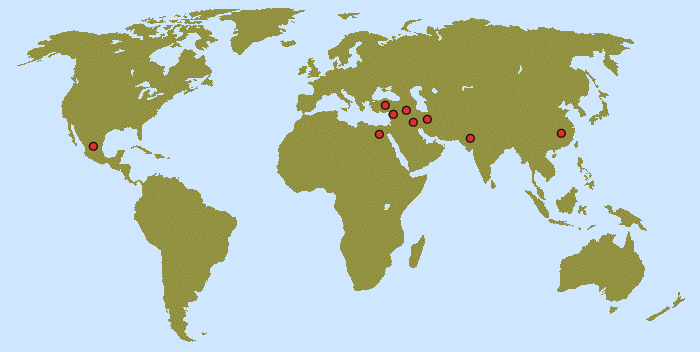
The Hittite god Kumarbis represented as the winged disk above a battle scene.
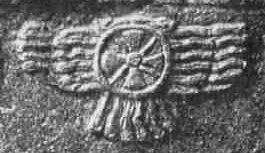
The winged star disk representing the Assyria god Antum.

